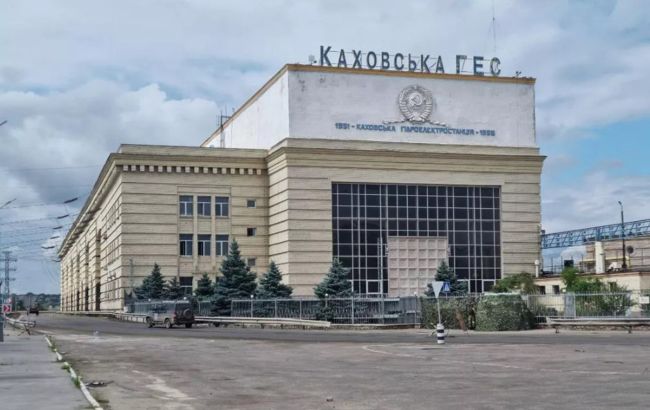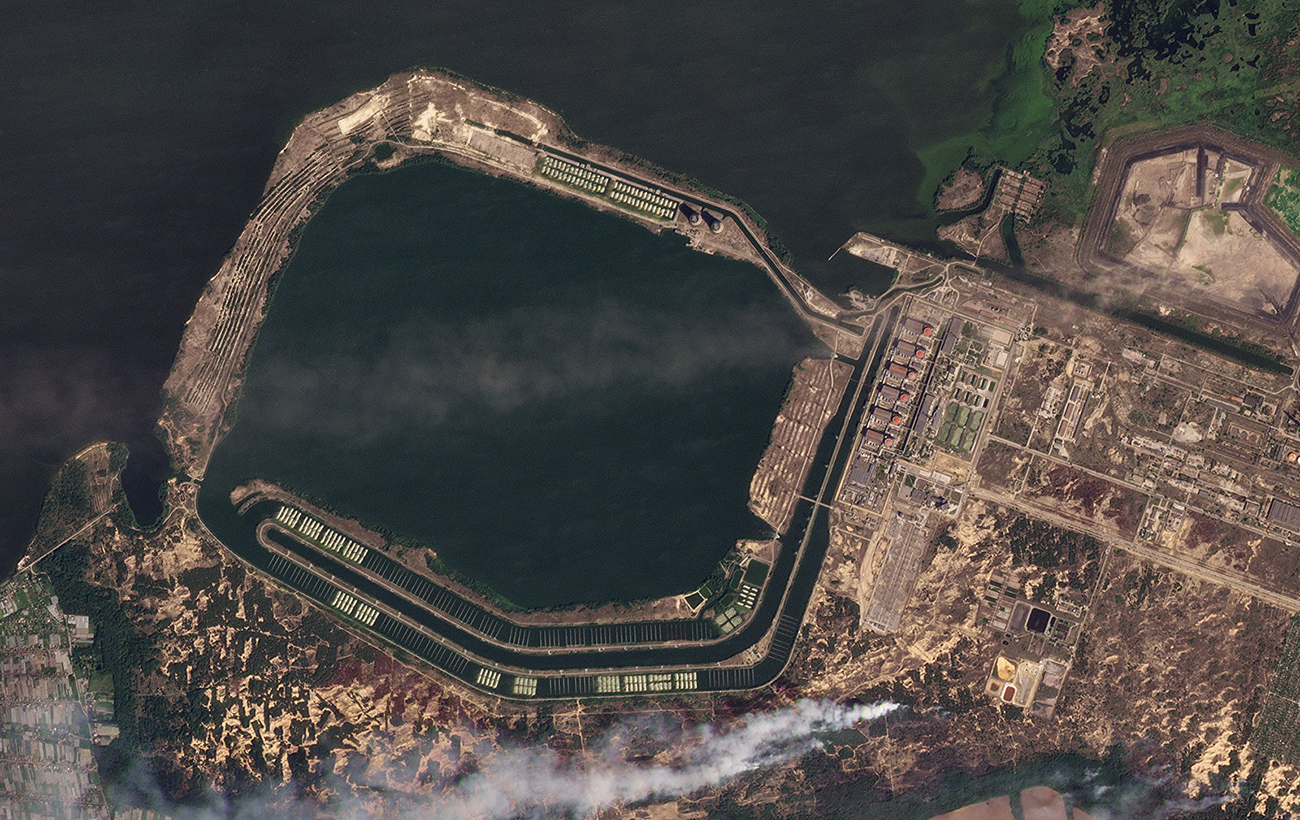Kahovka HPP explosion: real threat to energy sector and potential consequences
 Kakhovka HPP (Photo: Russian media)
Kakhovka HPP (Photo: Russian media)
The explosion at the Kahovka hydroelectric power plant is not expected to have a significant impact on Ukraine's energy system in the short term. Any minor electricity deficit that may arise can be covered through imports or increased thermal generation. However, serious problems may arise in the future.
It has been 10 days since the Russian occupiers destroyed the Kahovka HPP dam, and the scale of the tragedy is immense. According to preliminary estimates by the Ministry of Ecology, the losses amount to approximately 55 billion hryvnias. The water level in the reservoir has decreased by more than half and is now eight meters below normal, according to Ukrhydroenergo (the largest hydropower generating company in Ukraine).
According to the Ministry of Internal Affairs of Ukraine, 46 settlements in the Kherson region were flooded after the dam was destroyed – 32 on Ukrainian-controlled territory and 14 in temporarily occupied areas. Over 2,700 people have been evacuated. In the Mykolaiv region, 31 settlements have been flooded, and approximately one thousand people have been evacuated.
In recent days, the water has gradually receded from the affected areas. However, further hydro-technical structure explosions may occur. Valerii Shershen, Spokesperson for the Joint Press Center of the Tauride Defense Forces, stated, “The enemy is cunning, nervous, and using any means to prevent a breakthrough of our defense... Further explosions of smaller reservoirs and dams are imminent.”
The Kahovka HPP is not the only hydro facility targeted by the occupiers. At the end of last week, a dam in the vicinity of Novodarivka village, Zaporizhia region, was also blown up, resulting in the flooding of areas along both banks of the Mokri Yaly River.
Earlier, in late May, Russians destroyed the dam of the Karlivka reservoir in the Donetsk region.
The Ministry of Defense claims that the occupiers have mined hydro-technical structures in the Zaporizhzhia and Kherson regions, where Ukrainian forces are counterattacking. “They are now undermining small hydro-technical structures in various settlements daily,” said Vladyslav Dudar, representative of the Department of Environmental Safety and Demining of the Ministry of Defense of Ukraine.
Environmentalists warn of serious consequences following the destruction of the Kahovka HPP dam. If the water level in the reservoir falls below the critical mark of three meters, the situation will worsen even further. However, Ukrhydroenergo hopes this will not happen. “We hope that the lower hydro-technical structure remains intact. If it does, the water level in the Kahovka reservoir may stay within the range of 6-7 meters. If it is damaged, it enters the critical zone,” said Ihor Syrota, CEO of the company.
Impact on the energy sector
Ukraine has a total of 10 hydroelectric power plants with a combined capacity of 10 MW, 4 pumped-storage power plants, and about 50 small hydroelectric power plants with a capacity of up to 10 MW located on the Dnipro and Dniester Rivers. They contribute up to 20% of the electricity supply at certain times.
Currently, the actual loss of the Kahovka HPP will not affect the situation in the energy system, and there will be no electricity shortages. It was stated by the Ministry of Energy and Ukrenergo (national power company). “In the short term, since the station was not operating within the Ukrainian energy system, we cannot say that we have lost any generation. However, together with Ukrhydroenergo, we have reviewed the operating modes of other hydroelectric power plants to mitigate the consequences of the flood. There is some effect on the operation of other hydroelectric power stations due to the explosion,” emphasized Volodymyr Kudrytskyi, Chairman of Ukrenergo.
Minister of Energy Herman Halushchenko stated the need to increase the capacity for electricity imports due to the reduction in hydropower generation. “In this regard, we rely on the support of our partners and the increase in capacity to import up to 2 GW of electricity,” he emphasized.
Efforts will be made to avoid power outages not only through imports but also by increasing thermal generation. “This is not a cheap solution, but it is much cheaper than disconnecting consumers. Our main goal during the summer and autumn is to avoid consumer disconnections, and do our best to maintain a balance in the energy system,” said Volodymyr Kudrytskyi, head of Ukrtransgaz.
Kakhovka HPP was seized by Russians from the early days of the occupation and was not part of the Ukrainian energy system. However, initially, the Ukrainian government was concerned that the destruction of the dam could affect the water level at other Ukrainian hydroelectric power plants, leading to an imbalance in the energy system. But so far, there haven't been any significant problems. Currently, the share of hydro generation is small, up to 5%, said Hennadii Riabtsev, the Head of special projects at the "Psychea" Scientific and Technical Center, in an interview with RBC-Ukraine. However, hydro generation is important for daily energy balancing.
According to Ukrenergo, as of June 6, hydroelectric power plants are operating at reduced capacity, but the generation is sufficient. Detailed data on the reduction of hydro generation are not disclosed. The summer repair campaign at thermal and nuclear power plants is ongoing, and emergency assistance from Romania and Poland, totaling 1600 MW-hours, is being used to support the balance.
Kakhovka is the last HPP in the Dnipro cascade. All plants downstream of Kakhovka have reduced electricity production to avoid increasing the water flow, states Riabtsev. "The plants located higher on the Dnipro cannot release more water, as it would cause an overflow of the reservoir upstream of the Dnipro HPP. Generation at Dnipro HPP has been reduced to avoid increasing the flooded area downstream," added Riabtsev.
However, once the water level normalizes, the plants will resume full operation, according to Oleksandr Kharchenko, the Head of the Energy Research Center. “I believe that within the next two weeks, the situation will become clear, and the generation of the plants can be restored,” he added.
Zaporizhzhia nuclear power plant – the main danger
Zaporizhzhia NPP poses the main danger resulting from the destruction of the Kakhovka dam. The reactors of the plant are cooled by water from a special basin replenished by water from the Kakhovka reservoir during the operation of the plant's units. However, currently, five units of the plant are in a "cold shutdown" mode, and there is enough water in the basin to cool them, according to Energoatom (national nuclear energy generating company).
Moreover, last week, the State Nuclear Regulatory Inspectorate of Ukraine decided to switch the last of the six Zaporizhia NPP units, Unit 5, to the same mode, which had previously operated for heating in Energodar during the winter. In the future, this will further reduce the water consumption for cooling. However, as per the information from the State Nuclear Regulatory Inspectorate, the unit has not yet been switched to the "cold shutdown" mode since Russian occupiers do not allow the Ukrainian staff of the NPP to start the process.
 Zaporizhzhia NPP cooling pond (Photo: planet-com)
Zaporizhzhia NPP cooling pond (Photo: planet-com)
The International Atomic Energy Agency (IAEA) has already expressed concern about the situation since they believe that the water in the basin will be sufficient for only a few months. Rafael Grossi, the Director General of the IAEA, arrived in Kyiv on June 13. He plans to visit the disaster area to ensure that there is enough water for the cooling of the reactors. However, his visit to the plant, which was planned for June 14, was canceled due to safety reasons. According to unofficial information, the IAEA Head may visit the plant on June 15.
On June 8, the IAEA stated that if the water level in the reservoir drops to 12.7 meters, the Zaporizhzhia NPP will not be able to pump water into the basin. Currently, the water level is already below this critical mark. However, due to the loss of hydraulic communication with the main part of the reservoir, further observations by Ukrhydroenergo have become impossible. Experts are looking for new ways to measure the water level. Exact figures are not disclosed, but according to Ihor Syrota, the water level has already dropped below 8 meters, decreasing by 4-5 cm per hour. "We know that below 12.7 meters, what we called the 'dead zone,' the intakes do not work. If the decrease reaches 7 meters, it would be better. Otherwise, we will have to wait months to gain each centimeter, each meter. Most likely, we will reach a certain level (12.7 meters – Ed.) only after the spring flood. And that will take another year," Syrota said to Radio Free Europe.
If the water level falls below 3 meters, it will not be possible to restore it during the next flood, according to the CEO of Ukrhydroenergo.
However, Energoatom states that there are currently no real reasons to worry. Initially, there were concerns that changes in the underground water flow after the explosion could affect the basin's water level at the Zaporizhzhia NPP. However, these concerns have not been confirmed. The water level in the cooling basin has remained stable at 16.67 meters since the dam explosion.
The basin is isolated from the reservoir. Even if water evaporates naturally from the basin, it can be replenished using pumps or artesian wells. "In addition to the Kakhovka reservoir, there are several sources for replenishing the cooling pond. These are mobile pumping units that can be deployed if necessary, and the last resort is to use underground wells for drinking water," said Petro Kotin, the President of Energoatom. However, he referred to the water level in the reservoir at 13.3 meters as the "dead zone".
Experts from the French Institute for Radiological Protection and Nuclear Safety stated in their report that the decrease in the water level in the Dnipro River could lead to leakage or even collapse of the Zaporizhzhia NPP basin. They believe that the water pressure on the dam from inside the basin will increase if the water drains.
However, Energoatom argues that such a scenario is practically impossible since the facility was designed considering the decrease in the reservoir's water level. They stated that even under the worst-case scenario, the dam's destruction would be partial, and there would be enough water to cool the reactors.
However, even if the structures of the Zaporizhzhia NPP remain intact, it will not be possible to resume electricity generation after its de-occupation. There will not be enough water for cooling the operational units. Currently, active work is underway to prepare a project for blocking the reservoir to provide water to the affected settlements in four regions. According to Ihor Syrota, the project will be ready by July 10. The funding is planned to be done jointly with international financial organizations. The work can start immediately after the de-occupation.
It will take a year to block the canal. Then another five years will be needed for the construction of a new power plant since the restoration of Kakhovka HPP is not feasible, states the CEO of Ukrhydroenergo.

